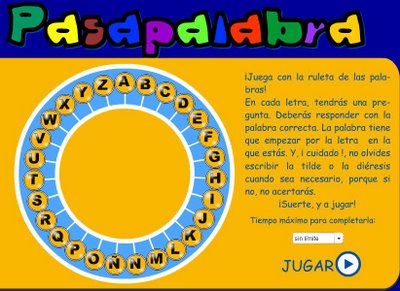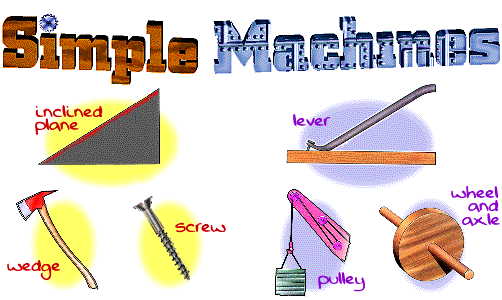ELECTRIC CIRCUITS
For an electric current to happen, there must be a circuit. A circuit is a closed path or loop around which an electric current flows. A circuit is usually made by linking electrical components together with pieces of wire cable. Thus, in a flashlight, there is a simple circuit with a switch, a lamp, and a battery linked together by a few short pieces of copper wire. When you turn the switch on, electricity flows around the circuit. If there is a break anywhere in the circuit, electricity cannot flow. If one of the wires is broken, for example, the lamp will not light. Similarly, if the switch is turned off, no electricity can flow. This is why a switch is sometimes called a circuit breaker.
You don’t always need wires to make a circuit, however. There is a circuit formed between a storm cloud and the Earth by the air in between. Normally air does not conduct electricity. However, if there is a big enough electrical charge in the cloud, it can create charged particles in the air called ions (atoms that have lost gained some electrons). The ions work like an invisible cable linking the cloud above and the air below. Lightning flows through the air between the ions.
How electricity moves in a circuit
Materials such as copper metal that conduct electricity (allow it to flow freely) are called conductors. Materials that don’t allow electricity to pass through them so readily, such as rubber and plastic, are called insulators. What makes copper a conductor and rubber an insulator?
A current of electricity is a steady flow of electrons. When electrons move from one place to another, round a circuit, they carry electrical energy from place to place like marching ants carrying leaves. Instead of carrying leaves, electrons carry a tiny amount of electric charge.

Electricity can travel through something when its structure allows electrons to move through it easily. Metals like copper have "free" electrons that are not bound tightly to their parent atoms. These electrons flow freely throughout the structure of copper and this is what enables an electric current to flow. In rubber, the electrons are more tightly bound. There are no "free" electrons and, as a result, electricity does not really flow through rubber at all. Conductors that let electricity flow freely are said to have a high conductance and a low resistance; insulators that do not allow electricity to flow are the opposite: they have a low conductance and a high resistance.
For electricity to flow, there has to be something to push the electrons along. This is called an electromotive force (EMF). A battery or power outlet creates the electromotive force that makes a current of electrons flow. An electromotive force is better known as a voltage.
Design a Cell Phone:
Help engineering director Elena design and manufacture a cell phone to help senior citizens get the most out of new technology!

148th Anniversary of SOROLLA's Birth
 Joaquin Sorolla y Bastida (February 27, 1863 - August 10, 1923) was a Spanish painter, born in Valencia, who excelled in the painting of portraits, landscapes, and monumental works of social and historical themes. His most typical works are characterized by a dexterous representation of the people and landscape under the sunlight of his native land. Joaquin Sorolla was the eldest child born to a tradesman, also named Joaquin, and his wife, Concepcion Bastida. His sister, Concha, was born a year later. In August 1865 both children were orphaned when their parents died, possibly from cholera. They were thereafter cared for by their maternal aunt and uncle. He received his initial art education, at the age of fourteen, in his native town, and then under a succession of teachers including Cayetano Capuz, Salustiano Asenjo. At the age of eighteen he traveled to Madrid, vigorously studying master paintings in the Museo del Prado.
Joaquin Sorolla y Bastida (February 27, 1863 - August 10, 1923) was a Spanish painter, born in Valencia, who excelled in the painting of portraits, landscapes, and monumental works of social and historical themes. His most typical works are characterized by a dexterous representation of the people and landscape under the sunlight of his native land. Joaquin Sorolla was the eldest child born to a tradesman, also named Joaquin, and his wife, Concepcion Bastida. His sister, Concha, was born a year later. In August 1865 both children were orphaned when their parents died, possibly from cholera. They were thereafter cared for by their maternal aunt and uncle. He received his initial art education, at the age of fourteen, in his native town, and then under a succession of teachers including Cayetano Capuz, Salustiano Asenjo. At the age of eighteen he traveled to Madrid, vigorously studying master paintings in the Museo del Prado.After completing his military service, at twenty-two Sorolla obtained a grant which enabled a four year term to study painting in Rome, Italy, where he was welcomed by and found stability in the example of F. Pradilla, the director of the Spanish Academy in Rome. A long sojourn to Paris in 1885 provided his first exposure to modern painting; of special influence were exhibitions of Jules Bastien-Lepage and Adolf von Menzel. Back in Rome he studied with Jose Benlliure, Emilio Sala, and Jose Villegas.
Click here for the complete biography and works.
ELECTRICITY
If you’ve ever sat watching a thunderstorm, with mighty lightning bolts darting down from the sky, you’ll have some idea of the power of electricity. A bolt of lightning is a sudden, massive surge of electricity between the sky and the ground beneath. The energy in a single lightning bolt is enough to light 100 powerful lamps for a whole day or to make a couple of hundred thousand slices of toast!
Electricity is the most versatile energy source that we have; it is also one of the newest: homes and businesses have been using it for not much more than a hundred years. Electricity has played a vital part of our past. But it could play a different role in our future, with many more buildings generating their own renewable electric power using solar cells and wind turbines. Let’s take a closer look at electricity and find out how it works!
What is electricity?
Electricity is a type of energy that can build up in one place or flow from one place to another. When electricity gathers in one place it is known as static electricity (the word static means something that does not move); electricity that moves from one place to another is called current electricity.
Static electricity
Static electricity often happens when you rub things together. If you rub a balloon against your jumper 20 or 30 times, you’ll find the balloon sticks to you. This happens because rubbing the balloon gives it an electric charge (a small amount of electricity). The charge makes it stick to your jumper like a magnet, because your jumper gains an opposite electric charge. So your jumper and the balloon attract one another like the opposite ends of two magnets.

Have you ever walked across a nylon rug or carpet and felt a slight tingling sensation? Then touched something metal, like a door knob or a faucet, and felt a sharp pain in your hand? That is an example of an electric shock. When you walk across the rug, your feet are rubbing against it. Your body gradually builds up an electric charge, which is the tingling you can sense. When you touch metal, the charge runs instantly to Earth—and that’s the shock you feel.
Lightning is also caused by static electricity. As rain clouds moved through the sky, they rub against the air around them. This makes them build up a huge electric charge. Eventually, when the charge is big enough, it leaps to Earth as a bolt of lightning. You can often feel the tingling in the air when a storm is brewing nearby. This is the electricity in the air around you. Read more about this in our article on capacitors.
Two kinds of static electricity
Electricity is caused by electrons, the tiny particles that "orbit" around the edges of atoms, from which everything is made. Each electron has a small negative charge. An atom normally has an equal number of electrons and protons (positively charged particles in its nucleus or centre), so atoms have no overall electrical charge. A piece of rubber is made from large collections of atoms called molecules. Since the atoms have no electrical charge, the molecules have no charge either – and nor does the rubber.

Suppose you rub a balloon on your jumper over and over again. As you move the balloon back and forward, you give it energy. The energy from your hand makes the balloon move. As it rubs against the wool in your jumper, some of the electrons in the rubber molecules are knocked free and gather on your body. This leaves the balloon with slightly too few electrons. Since electrons are negatively charged, having too few electrons makes the balloon slightly positively charged. Your jumper meanwhile gains these extra electrons and becomes negatively charged. Your jumper is negatively charged, and the balloon is positively charged. Opposite charges attract, so your jumper sticks to the balloon.
Photo: A classic demonstration of static electricity you may have seen in your school. When this girl touches the metal ball of a Van der Graaf static electricity generator, she receives a huge static electric charge and her hair literally stands on end! Each strand of hair gets the same static charge and like charges repel, so her hairs push away from one another.
Current electricity
When electrons move, they carry electrical energy from one place to another. This is called current electricity or an electric current. A lightning bolt is one example of an electric current, although it does not last very long. Electric currents are also involved in powering all the electrical appliances that you use, from washing machines to flashlights and from telephones to MP3 players. These electric currents last much longer.
Have you heard of the terms potential energy and kinetic energy? Potential energy means energy that is stored somehow for use in the future. A car at the top of a hill has potential energy, because it has the potential (or ability) to roll down the hill in future. When it’s rolling down the hill, its potential energy is gradually converted into kinetic energy (the energy something has because it’s moving).

Static electricity and current electricity are like potential energy and kinetic energy. When electricity gathers in one place, it has the potential to do something in the future. Electricity stored in a battery is an example of electrical potential energy. You can use the energy in the battery to power a flashlight, for example. When you switch on a flashlight, the battery inside begins to supply electrical energy to the lamp, making it give off light. All the time the light is switched on, energy is flowing from the battery to the lamp. Over time, the energy stored in the battery is gradually turned into light (and heat) in the lamp. This is why the battery runs flat.
Picture: A battery like this stores electrical potential energy in a chemical form. When the battery is flat, it means you’ve used up all the stored energy inside by converting it into other forms.
Machines Activities:
Simple Machines Activities:
Learn about simple and compound machines while you explore the House and Tool Shed!
The Compound Machine:
Learn how forces and simple machines can work together to create The Compound Machine!



THANK YOU EVERYONE!!
You’re my inspiration!!![]()
PASAPALABRA

I’m sure you all want to have some fun after this hard week.
Click here and try to beat the clock.
Good luck!!
More about Simple Machines
KET & PET On-line Reading Comprehension Practice
An elementary and intermediate level exam, testing your ability to deal with written and spoken communications.
14th February: SAINT VALENTINE'S DAY

Every February we celebrate Valentine’s Day by giving flowers, candy and cards to those we love. We do this in honor of Saint Valentine. You may be wondering, "Who is St. Valentine"? Time to brush up on your Valentine’s history!
Legend has it that Valentine was a priest who served during third century Rome. There was an Emperor at that time by the name of Claudius II. Emperor Claudius II decided that single men made better soldiers than those that were married. With this thought in mind he outlawed marriage for young men in hopes of building a stronger military base. Supposedly, Valentine, decided this decree just wasn’t fair and chose to marry young couples secretly. When Emperor Claudius II found out about Valentine’s actions he had him put to death.
Another legend has it that Valentine was an imprisoned man who fell in love with his jailor’s daughter. Before he was put to death he sent the first ’valentine’ himself when he wrote her a letter and signed it ’Your Valentine’, words still used on cards today.
Perhaps we’ll never know the true identity and story behind the man named St. Valentine, but this much is for sure... February has been the month to celebrate love for a long time, dating clear back to the Middle Ages. In fact, Valentines ranks second only to Christmas in number of greeting cards sent.
Another valentine gentleman you may be wondering about is Cupid (Latin cupido, "desire"). In Roman mythology Cupid is the son of Venus, goddess of love. His counterpart in Greek mythology is Eros, god of love. Cupid is often said to be a mischievous boy who goes around wounding both gods and humans with his arrows, causing them to fall in love.
Also, check out the History of Valentine’s Day and other ideas for Valentine’s Day, including creative Valentine cards, Valentine party games, and many more fun activities.
164th birth anniversary of Thomas Alva Edison
Martes 8 de Febrero de 2011: DÍA INTERNACIONAL DE LA INTERNET SEGURA
- Promovido por la Comisión Europea y organizado por INSAFE -Red Europea que promueve el uso seguro y responsable de Internet y dispositivos móviles para jóvenes- y por su representante en España: la organización PROTEGELES.
- Se celebra en más de 65 países de todo el mundo, que comparten el mismo mensaje: "INTERNET ES MÁS QUE ES UN JUEGO, ES TU VIDA"
Ayer martes se celebró en todo el mundo el DÍA INTERNACIONAL DE LA INTERNET SEGURA: SID 2011. Se trata de un evento que tiene lugar cada año en el mes de febrero, con el objetivo de promover un uso responsable y seguro de las nuevas tecnologías, especialmente entre menores y jóvenes. Es promovido directamente por la Comisión Europea y está organizado por INSAFE, la Red Europea por una Internet Segura, y en España por la organización PROTEGELES como centro de sensibilización español perteneciente al INSAFE.
El eslogan de este año es: "INTERNET ES MAS QUE UN JUEGO, ES TU VIDA", y apela al hecho de que nuestras acciones y decisiones, cuando estamos interactuando con nuestros amigos en las redes sociales o jugando en red, tienen su repercusión en la vida real. Los juegos online y las redes sociales son las actividades más populares entre los jóvenes europeos. Según los estudios de la Comisión Europea el 80% de los internautas europeos entre 16 y 24 años ha usado una red social durante 2010. Este porcentaje sube al 94% en Polonia y al 90% en Portugal y Eslovenia. En España, el 79% de los jóvenes internautas utiliza la red también para este uso. Por su parte, los jóvenes holandeses son los menos enganchados a las redes sociales, ya que sólo el 55% consulta blogs o está presente en la web social. Así mismo, otros estudios apuntan a que aproximadamente el 65% de los menores europeos son consumidores habituales de videojuegos.
Este año, el SID 2011 pretende sensibilizar a los más jóvenes sobre la necesidad de mantener en la vida virtual una actitud similar a la que mantenemos en la vida real, respetando normas de conducta, de educación y de relación que permitan hacer un uso satisfactorio de internet.
Guillermo Cánovas, Presidente de PROTEGELES, la organización que representa al INSAFE en España, señala que: "muchas situaciones que se producen durante una tarde en una red social, tienen después su repercusión en el colegio o el instituto al día siguiente. Los comentarios, las fotos que se suben, etc, son normalmente sobre personas reales que conocemos y con las que de una forma u otra nos estamos relacionando".
La organización PROTEGELES ha impartido en estos últimos años conferencias y talleres en más de 1.000 colegios e institutos de toda España. Durante estas charlas recomiendan a los menores ser cautelosos con las fotos e informaciones que cuelgan en internet. Así, por ejemplo, al hablar sobre las fotografías que van a subir siempre les hacen la siguiente reflexión: "antes de subir una foto a internet, piensa si est´s dispuesto/a a que tus padres lleguen a verla" o si estás dispuesto/a a que se la lleguen a encontrar tus propios hijos en el futuro o tu jefe del trabajo" Pues si una sola persona copia esa foto que has subido, podrá distribuirla por todo el mundo".
Cientos de organizaciones promueven en España la celebración del DÍA INTERNACIONAL DE LA INTERNET SEGURA: desde las confederaciones de asociaciones de padres de alumnos, las fuerzas y cuerpos de seguridad del estado, la industria de internet y otras instituciones: CEAPA, CONCAPA, BRIGADA DE INVESTIGACION TECNOLÓGICA DE LA POLICIA, GRUPO DE DELITOS TELEMÁTICOS DE LA GUARDIA CIVIL, INTECO, VOLUNTARIOS POR MADRID, MICROSOFT, YAHOO, TELEFóNICA, ORANGE, VODAFONE, YOIGO, HABBO, TUENTI, BRITISH TELECOM, etc...
Durante el SID 2011 se difunde en todo el mundo el mismo spot de televisión, el mismo logo y el mismo eslogan, con el objetivo de unificar el mensaje.
Web oficial del SID 2011 en España: www.internetsegura2011.es .


There is a new link in our blog!!
If you want to keep on learning and reviewing the name of the Autonomous Communities in Spain and/or the name of all the European Countries click on MAPAS INTERACTIVOS (after the Text to Speech Translator) and have fun.




